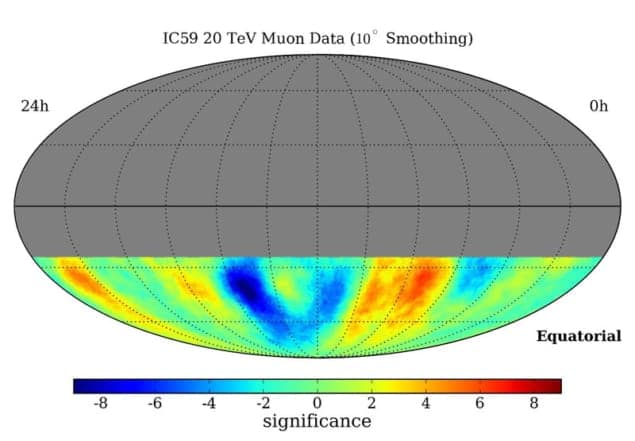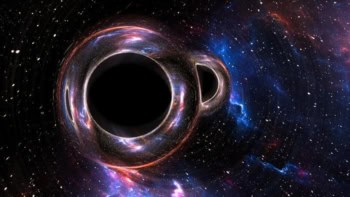
Physicists have produced the first complete map of the high-energy cosmic rays that bombard the Earth from the southern sky. The researchers have discovered an excess of cosmic rays coming from certain directions, which may link to nearby sources, including pulsars.
The data for the map were captured by IceCube, a neutrino detector in Antarctica that was completed last December after six years of construction. While IceCube was designed primarily to detect cosmic neutrinos, a team of researchers have been using the partially built experiment to detect cosmic rays originating from across the Milky Way. These charged particles are of interest to astrophysicists because they can reveal information about their sources and the intervening space through which they have travelled.
Cosmic rays arriving at Earth were detected by the 2.5 km vertical “strings” of light sensors contained within the IceCube detector, which is buried beneath the Antarctic ice. Or, more accurately, photomultipliers within the strings detect the Cerenkov radiation given off by muons produced by the interaction of cosmic rays with atomic nuclei on their journey to Earth.
Deep beneath the ice
Antarctica was chosen as the place to locate the IceCube detector because the ice serves as the detection medium in which muons and other charged particles travelling through it emit Cerenkov radiation. “The deep ice is very dark, so no other sources of light interfere in the detection,” said Marcos Santander, of the University of Wisconsin-Madison, who was involved in the mapping project.
Santander and his colleagues collected data between 2007 and 2009 when IceCube had just 59 strings and they mapped the relative intensity of cosmic rays coming from all directions in the southern sky. They found that the distribution of arrival directions of cosmic rays is highly anisotropic, suggesting that some regions of the galaxy are producing more cosmic rays than others. Santander says that he believes the cosmic-ray hotspots may be related to nearby pulsars between 150 and 300 parsecs away from Earth.
Santander said that the map is also consistent with what has been observed in the northern sky by previous cosmic-ray experiments such as the Milagro experiment near Los Alamos in the US. His group is currently carrying out the same analysis using newer data, captured when the detector had 79 strings. “We’re also exploring the possibility of doing a combined analysis with other experiments in the north,” he told physicsworld.com.
Santander presented the cosmic-ray map last week at the American Physical Society’s April meeting in Anaheim, California.



